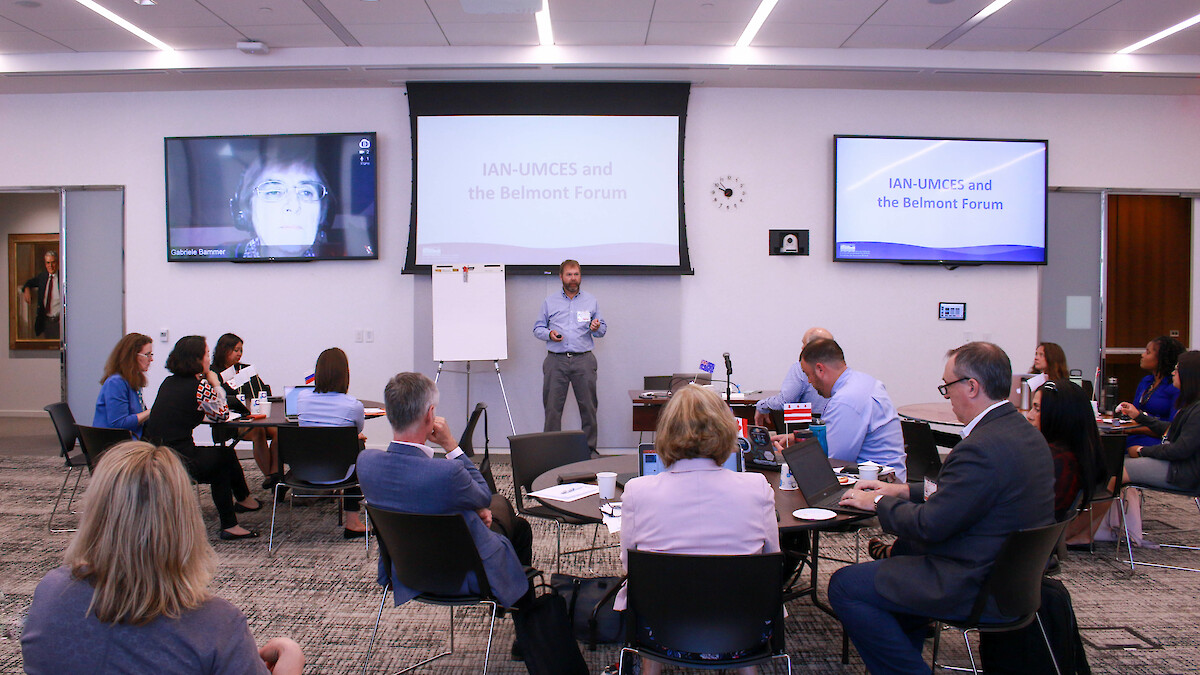The Integration and Application Network facilitates virtual workshops
Bill Dennison ·
Moving to the 'new normal'
In person meetings and workshops have been the standard way for scientists and resource managers to share information and knowledge, achieve consensus, and co-create material. The Integration and Application Network (IAN) team at the University of Maryland Center for Environmental Science (UMCES) has been facilitating in-person workshops around the world to achieve scientific consensus, engage with diverse stakeholders and co-create a diversity of synthetic science communication products. But the global pandemic has made in-person meetings currently impossible and likely to become less frequent well into the future. So, the IAN team is pushing forward by holding virtual workshops, employing their videoconferencing and facilitation experience and skills, to continue to co-create and co-produce a diversity of synthesis materials. This strategy has the additional benefits of a) reducing the IAN carbon footprint, b) reducing time lost in long and difficult travel, and c) being able to increase the global dissemination and impact of IAN efforts. We plan to use our experience in video conferencing and facilitation to facilitate virtual workshops (see below).
Video conferencing
The University of Maryland Center for Environmental Science (UMCES) has a distributed campus, with laboratory units spread across the state of Maryland, distant from the main College Park campus. In addition, the University System of Maryland has 12 separate universities, also distributed throughout the state of a Maryland. As a result, the University of Maryland established a purpose-built interactive video network (IVN) in 1992 so that teaching could be delivered and received from any of the 12 universities and in the case of UMCES, any of the laboratory units. Once established, the IVN also served as a way for researchers to collaborate, and each institution began replicating the IVN facilities with multiple cameras, microphones, and video screens. As a result, UMCES personnel became quite facile working remotely, well before commercial software became available.

Working remotely proved to be important in the science and management of the Chesapeake Bay Program, a multi-state enterprise that stretches over an extensive watershed. It also became important as UMCES researchers began working globally, studying ecosystems from the tropics to polar regions. As commercial software became available, UMCES scientists, with their IVN experience, quickly embraced the new technologies (e.g., Skype, Google Hangouts, GoToMeeting, Bluejeans, Zoom).

Facilitation
The Integration and Application Network (IAN) was established by UMCES in 2002 to accomplish positive environmental change through scientific synthesis, engagement and communication. Over the years, IAN scientists have developed a suite of interactive tools and strategies for effective engagement in order to develop scientific syntheses. These tools and strategies have been adapted to both in person and virtual meetings. IAN's team of Science Communicators and Science Integrators have developed effective facilitation skills, which is an important prerequisite for successful virtual workshops.
Virtual workshops

The combination of a rich history in using video technologies with experience in workshop facilitation, makes the IAN UMCES team particularly well suited to support virtual workshops. IAN has successfully facilitated virtual workshops that have produced a variety of scientific papers and science communication products. IAN staff use the full capabilities of virtual technologies, using share screens, chat functions, hand raising, breakout rooms, etc. IAN uses Mentimeter for real time feedback and Survey Monkey for more deliberative input. Building on our education training of "flipped classrooms" in which students are provided prerecorded lectures, IAN staff use videos for content delivery to free up contact time so that workshops can be more interactive.

In-person workshops often take place for full days, often over multiple consecutive days. But our experience has shown us that virtual workshops are more effective if they involve short sessions (1-1.5 hrs long), spaced over multiple days. This actually provides an opportunity for participants to a) reflect on each module, b) conduct short homework assignments, c) entrain more people, and d) evaluate progress and make adaptations. Each module is recorded and summarized so that they can build upon each other.
About the author
Bill Dennison

Dr. Bill Dennison is a Professor of Marine Science and Vice President for Science Application at the University of Maryland Center for Environmental Science.